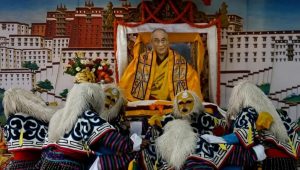International Migrant Day and Sri Lanka

 This year too a day passed as international migrants day on the 18th of December, yesterday as declared by the United Nations. Sri Lanka has seen over 300,000 migrant workers leaving in the island so far in 2022 said Foreign Employment Minister Manusha Nanayakkara holding International Migrant Day.
This year too a day passed as international migrants day on the 18th of December, yesterday as declared by the United Nations. Sri Lanka has seen over 300,000 migrant workers leaving in the island so far in 2022 said Foreign Employment Minister Manusha Nanayakkara holding International Migrant Day.
The labor migration story in Sri Lanka has a long history. The open economic pattern of 1977 paved the way for these emigrations. Sri Lankans left their motherland for various reasons, such as poverty, maintaining a stable economy, insufficient wages, and education, and over the time, human rights violations and abuses made this opportunity to Sri Lankans.
According to a report of Andrew Samuel of Community Development Services (CDS) in Colombo, about 245-250 million people are on the move for any one of the above reasons or multiple reasons. This is about 3.3% of the global population. They are categorized as asylum seekers, refugees and labour migrants. Besides the domiciled Sri Lankans living across borders and continents, we have close to 2 million migrant workers living and working in many regional countries and in the Gulf corridor in particular.
According to the records of the World Bank, Sub-regional GDP: In our sub-region, Sri Lanka’s GDP is projected at 2.7% from an average of 4%. India is at 6% and showing a decline in the past 5 quarters and its unemployment is at a 45-year high. Pakistan’s growth is at 3.3%. Bangladesh and Nepal are doing well at 8.1% and 7.1% respectively.
2018 labour migration data – total migrated population 211,459. Domestic Workers 81,685. Unskilled workers 51,719. Semiskilled workers 2,770. Skilled workers 67,053 and others 24,979 (Professionals, clerical, managerial).
The drivers of migration in Sri Lanka is similar to that of the sub-regional countries. Poverty and economic disparity, unemployment and under employment, gender inequality and the inability to save are factors that drive people to migrate for employment, Andrew Samuel report indicates.
So-called Poverty and hunger have been based for migration for a very long time. Sri Lanka’s poverty head count is 2.4%, or a little over 500,000 people. However, we have about 2.5 million people who are vulnerable to poverty.
 Andrew Samuel of Community Development Services (CDS) also explains that a staggering 79% of the employed population hold a qualification of having studied up to GCE O/L only. (15.8% below grade 6, 46.1% grade 6-10, 17.3% GCE O/L, 20.8% GCE A/L and beyond). This is not about literacy gains. This is about education, careers and skills. This is about either staying in the 3D (dirty, dangerous, demeaning) jobs or challenging the global recruitment industry and meeting the international job market beyond low skilled remittance earnings with bigger equity, international qualification standards, high productivity etc. It is about getting women and men brain gaining opportunities in the world of work. This requires a conscious and committed policy shift on the part of the government.
Andrew Samuel of Community Development Services (CDS) also explains that a staggering 79% of the employed population hold a qualification of having studied up to GCE O/L only. (15.8% below grade 6, 46.1% grade 6-10, 17.3% GCE O/L, 20.8% GCE A/L and beyond). This is not about literacy gains. This is about education, careers and skills. This is about either staying in the 3D (dirty, dangerous, demeaning) jobs or challenging the global recruitment industry and meeting the international job market beyond low skilled remittance earnings with bigger equity, international qualification standards, high productivity etc. It is about getting women and men brain gaining opportunities in the world of work. This requires a conscious and committed policy shift on the part of the government.
And, he also further mentions some recommendations for Sri Lanka migration as follows;
Labour migration must not be considered as a poor country’s or a developing country’s response to their economic ills. Every country has enormous talent to offer. Its political leaders and authorities must harness this wonderful human resource with dignity and respect.
With close to 2 million workers contributing the highest revenue stream to the country, labour migration deserves adequate and reasonable recognition and discussion in government. As such migration governance must be given priority.
 Authorities must regularise or put in place decent recruitment practices thereby safeguarding the interest of the migrant worker. The private recruitment agencies (PRA) and their intermediaries must follow decent practices or face consequences. Sri lanka should comply by the ILO Convention 181.
Authorities must regularise or put in place decent recruitment practices thereby safeguarding the interest of the migrant worker. The private recruitment agencies (PRA) and their intermediaries must follow decent practices or face consequences. Sri lanka should comply by the ILO Convention 181.
Sri Lanka has to think beyond its 90% primary literacy rate. This is no longer a credential to boast about. Skills recognition, at the international level, innovation and high productivity are leading factors of labour recognition in the international markets.
As safe and secure migration is important, a well-managed migration program can bring down poverty, and unemployment, build new skills sets and create a formidable and qualified workforce that will be respected both at home and overseas. This should include strong return and reintegration policies for workers and their families.






